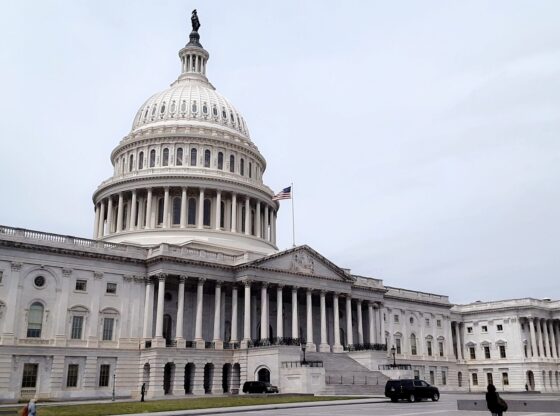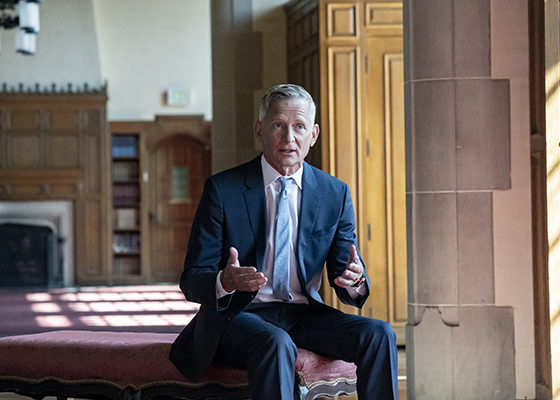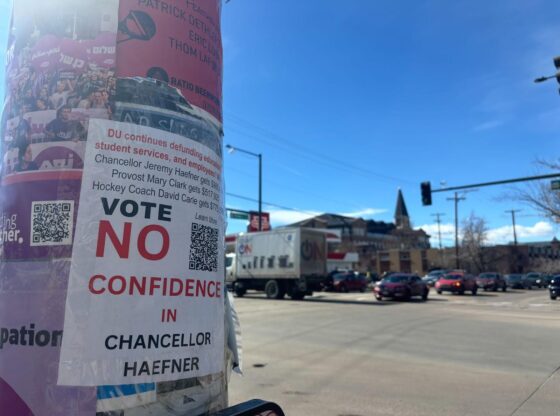This article is part two of a nine-part series that focuses on climate change. More specifically, this series will go in-depth on the human disconnect of accepting the reality of climate change, the role of the media, the power of student voices in environmental movements, climate science, sustainability and the pressure for the University of Denver to divest from fossil fuels.
Kanye West was seen with a new love affair, Julia Fox. Kim Kardashian has officially moved on to Pete Davidson. Are Machine Gun Kelly and Megan Fox or Rhianna and A$AP Rocky the best couple of 2021? Have I grabbed your attention?
The fight to combat climate change continues. The news on climate breakdown is frequent, but is overwhelmed with the over five million new posts, on WordPress alone, being published everyday. At this point, my articles on climate change feel like a broken record. Is the media shutting out the experts?
The media is an extremely influential tool. Journalism is constantly informing society on breaking news, the daily weather, the scheduling of concerts and sporting events. News sources can convince viewers who to vote for, they can tell you where to find the best Mexican food in the area, they can explain how to save money on groceries, which stocks to buy or sell and the list is endless. The media can be informative and helpful, all while being toxic and depressing.
There are also a wide range of news sources that’s main purpose for existence is to entertain the reader. This form of entertainment is an escape for many people. These sources like Buzzfeed, Entertainment Tonight, People magazine, along with social media platforms, serve as a distraction from complex issues. Understandably, readers want to shut out hard news articles to take a break from online school or a stressful day at work.
Why then, are news outlets failing us? Journalism is supported by readers, and most importantly– advertisers. Advertisers are what keep the publication flourishing, but can be seen as a distraction to the more important issues at hand, and in this case, climate change. The colorful ads with dancing graphics can draw the reader in, especially when the ad is catered perfectly for the reader’s wants and needs. Advertisers want to work with publications that have a high amount of views and readability. As a business, they are obligated to push out what sells over what is truly more important. The reality is, stories on climate change do not sell as much as celebrity drama and crime.
Important news sources like New York Times, The Washington Post, NPR, Associated Press and more are constantly reporting on climate change. These topics range from wildfires in January, tornadoes in the midwest in December, hurricanes taking over the northeast or the fact that the U.S. had the most extreme temperature records in 2021.
These sources are subscription-based due to the decline in print newspapers. This is bad for the general public because they are publishing important stories, but they are behind a paywall which makes it less accessible to the general public. The people who are willing to pay for unlimited articles at the New York Times are most likely keeping up-to-date and are aware of the reality of climate change.
The non-paying public are getting their news from free sources on social media like Facebook or from free trials or student discounts like the Wall Street Journal. The issue of strictly getting your news from Facebook is there is more room for the spread of misinformation. This is evident with the false information that was being spread about the COVID-19 vaccine.
You may recognize a few of these breaking news stories that were reported throughout 2021, and already in 2022. Now, do you think any climate deniers have changed their opinions? To be honest, we cannot survey that question to be exactly sure. But, the current evidence shows that the earth’s climate is still on track to have a 3.4°F increase in temperature between 2030 and 2052. Global warming causes a rise in sea levels due to the melting glaciers. This rise in sea levels will displace coastal communities, and this is only one example of the devastating effects of global warming. The reality is, climate breakdown is happening right now and at an accelerating rate whether you like it or not.
What will it take for people to wake up and understand that action needs to be taken?
The COP26 climate summit in Glasgow of October 2021 ended with a “compromise.” It is good that every country could unite and talk about climate change, but a loose deal that does not send the countries into “emergency mode” is not going to cut it.
As Guardian journalist, George Monbiot stated, “In fighting any great harm, in any age, we find ourselves confronting the same forces: distraction, denial and delusion.” Is the media distracting us from the harsh reality of our climate? Will society continue to fall subject to the most recent update of a celebrity’s life?
The media is creating forms of distraction, denial and delusion. Distraction is powerful in keeping society from discussing the important issues. We should all be sitting down and having uncomfortable conversations with our friends, family members and peers about the complex issues at hand.
Individuals can help with the climate crisis more directly. There are many environmental-focused organizations like 350, Sunrise Movement, Greenpeace, Alliance for the Climate Emergency and Citizens’ Climate Lobby. A few notable climate journalists are George Monbiot, Bill McKibben, Eric Roston and more.











